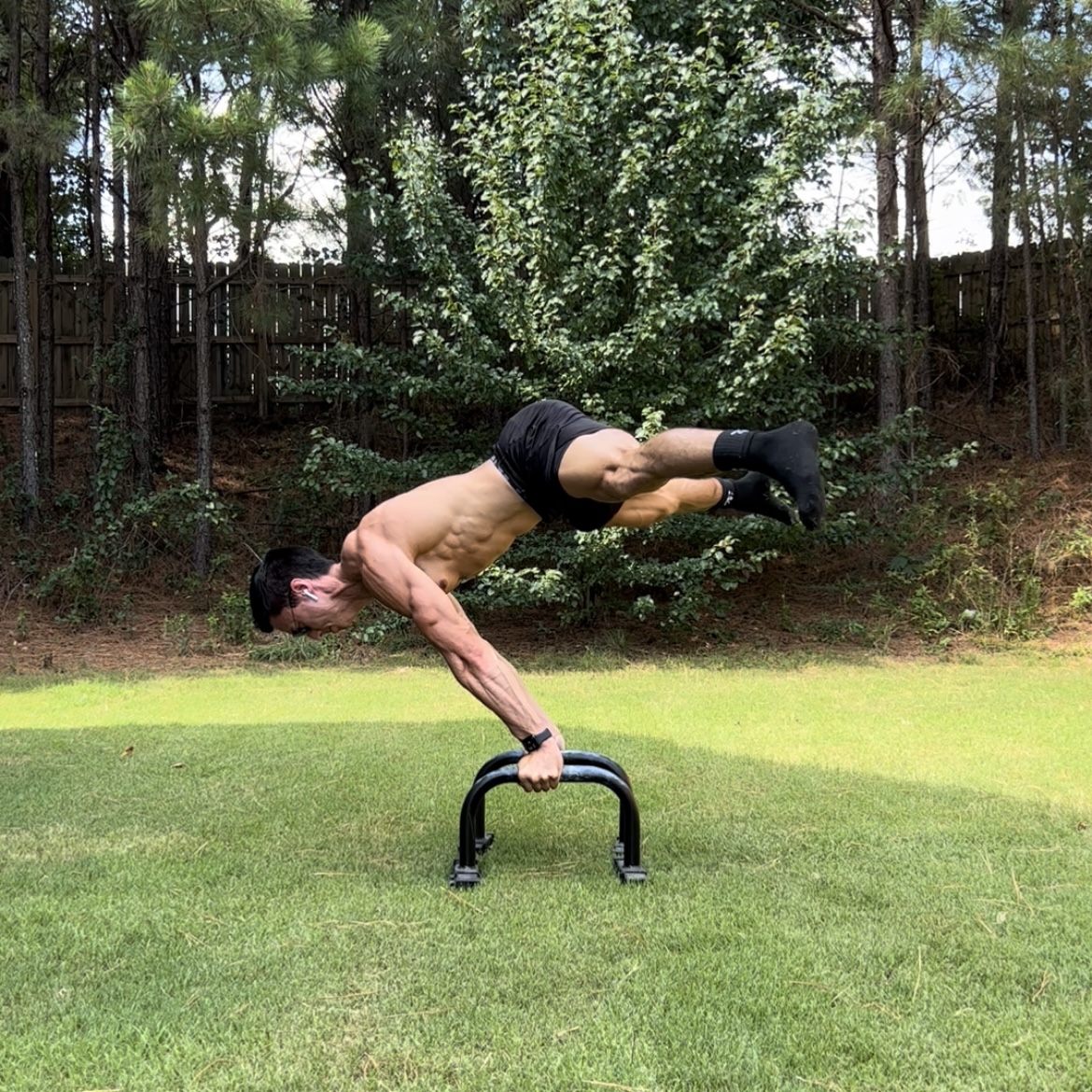Free Guide: Asian Skinny Fat to Fit
A guide for fixing your skinny fat physique and building the body you want.


In a previous post I covered 3 of the most popular training splits.
Those 3 splits are the most widely-known because they’re effective for a wide range of strength and muscle building (hypertrophy) goals.
But as your goals get more specific, a different approach or split may be needed.
In traditional strength training, you do strength exercises such as a bench press, squat, deadlift, dips, etc.
In the world of calisthenics, you can not only do strength exercises but skills as well.
Handstand. Planche. Front lever. Back lever.
The strength exercises are known as dynamic exercises—muscle tendons pull against bone to cause joint movements. Examples here would include a squat, bicep curl, or pullup.
The skill exercises are known as isometric or static exercises—exercises where there is no joint movement. Examples here would include a wall sit, plank, or any of the calisthenics skills mentioned earlier.
So, how does the addition of isometric exercises to calisthenics affect our training?
It’s simple: if your goal is to get stronger and do calisthenics skills, you have to train doing those skills.
Logically, this affects what you do when you train since you need to do both dynamic exercises and isometric exercises.
But it can also affect how you train in the form of a training split—Full Body, Upper/Lower, and Push/Pull/Legs.
All 3 of those are still perfectly good splits to use when you train using both dynamic and isometric exercises. But there’s one more that’s worth considering that’s made specifically for calisthenics.
This is where the Bent Arm/Straight Arm (BA/SA) split comes in.
Let’s take another look at the Big 4 calisthenics skills I mentioned earlier.
Handstand. Planche. Front lever. Back lever.
When you perform any of these skills correctly, your body isn’t moving.
 Straddle planche…straight arm/isometric/static exercise
Straddle planche…straight arm/isometric/static exercise
But focus only on the upper body since that’s where most of the strength is needed to perform these skills. The arms arms are fully extended, locked out, with the rest of your body maintaining the necessary shape to do the static hold.
Compare that to the dynamic exercises where you arms are bending through an eccentric and concentric phase of the exercise–pushups, pullups, rows, and handstand pushups.
Just like the Push/Pull/Legs split separated upper body exercises into pushing and pulling motions, the Bent Arm/Straight Arm split separates them by how the arm is used doing each exercise.
🧐 Yeah, you could technically just call this a Dynamic/Static split or a Strength/Skill split. I think Bent Arm/Straight Arm became the go-to simply because it’s easier to visualize and think about–your arm either bends or it doesn’t when doing an exercise. Use whatever helps you remember the difference!
So now that we know the difference between straight arm and bent arm exercises, what does a week of training look like using this split?
Just like the Upper/Lower split, the Bent Arm/Straight Arm split is best done 2 times or 4 times a week.
A MonWedFriSat schedule works well if you prefer training on the same days every week as I do. Otherwise you could simply train every other day.
On Bent Arm days, you do any Bent Arm exercises to help you address the strength and hypertrophy needed to do the static skills you want to do. Examples here would include pseudo planche pushups for planche, rows and pullups for front lever, and overhead presses for planche and handstand.
On Straight Arm days, you do the static calisthenics skills you want to do giving the highest priority to your most important goal. That could be perfecting a skill you can already do or addressing a weak skill you want to get better at.
If someone were trying to get better at handstand pushups and the planche, here’s one way I’d structure a week of workouts.
Monday
Wednesday
Friday … Very similar to Monday’s workout with a different “finisher” exercise
Saturday … Two small exercise changes here. The movement patterns are the same and still good choices for my goals.
Overall I think the BA/SA split can be a highly effective way to train calisthenics if you want to strength train and work on calisthenics skills at the same time.
If you’re more focused on general health and physique, I’d personally go with one of the Big 3 Splits. There’s just no point in training skills and static holds are far from optimal in terms of building strength and muscle mass.
I like that BA/SA gives you the flexibility to train 2x or 4x per week. The split between dynamic exercises and static exercises also brings a little variety to your training.
The downsides of BA/SA is that training 4 times a week means you’ll have at least one training day without a rest day before it (FriSat). Depending on how you like to train, entire days spent only doing static holds can start to get boring over time as well.
🙋♂️ Got a question about Bent Arm/Straight Arm splits? Get in touch with me and I will be more than happy to help!